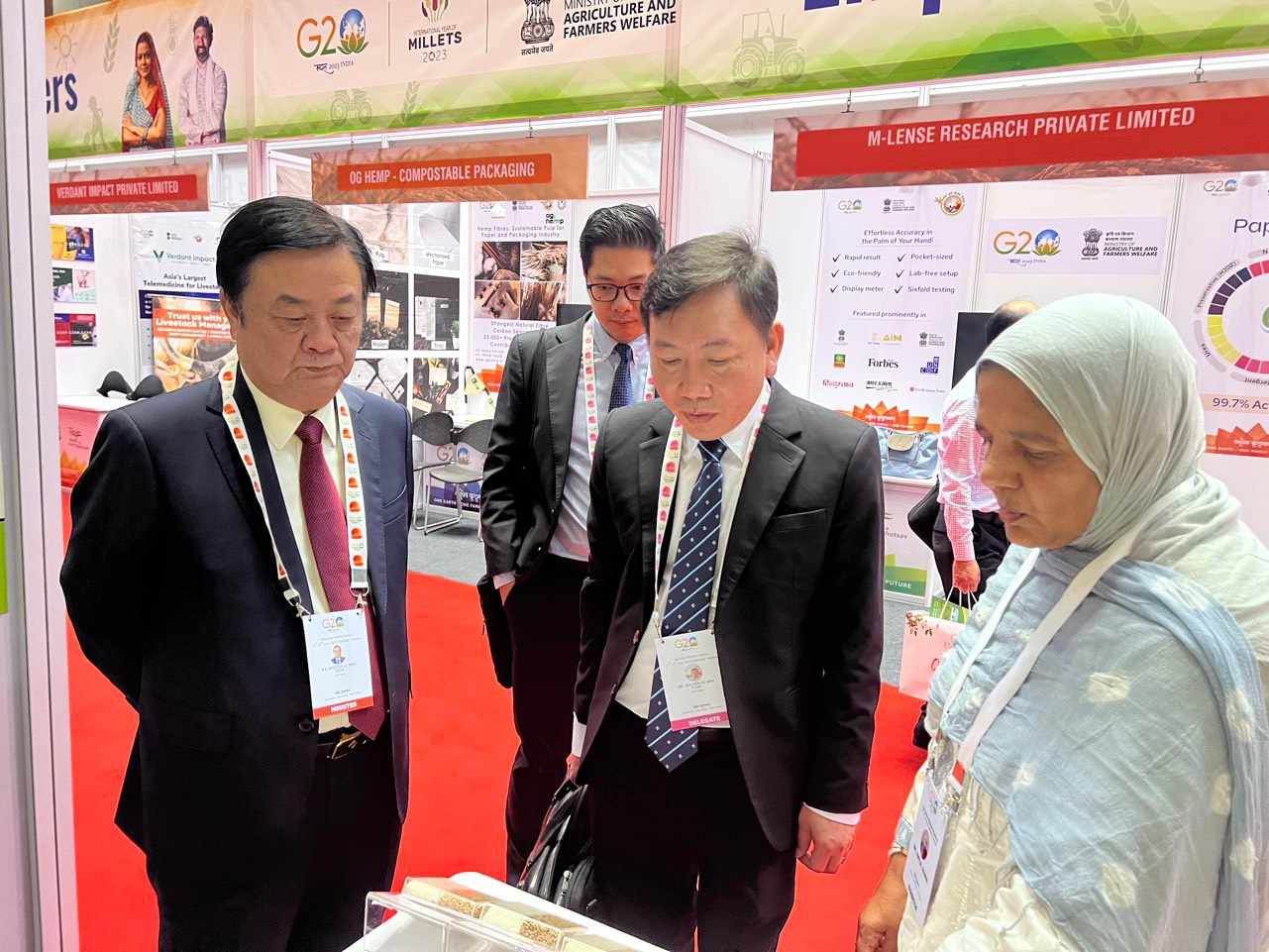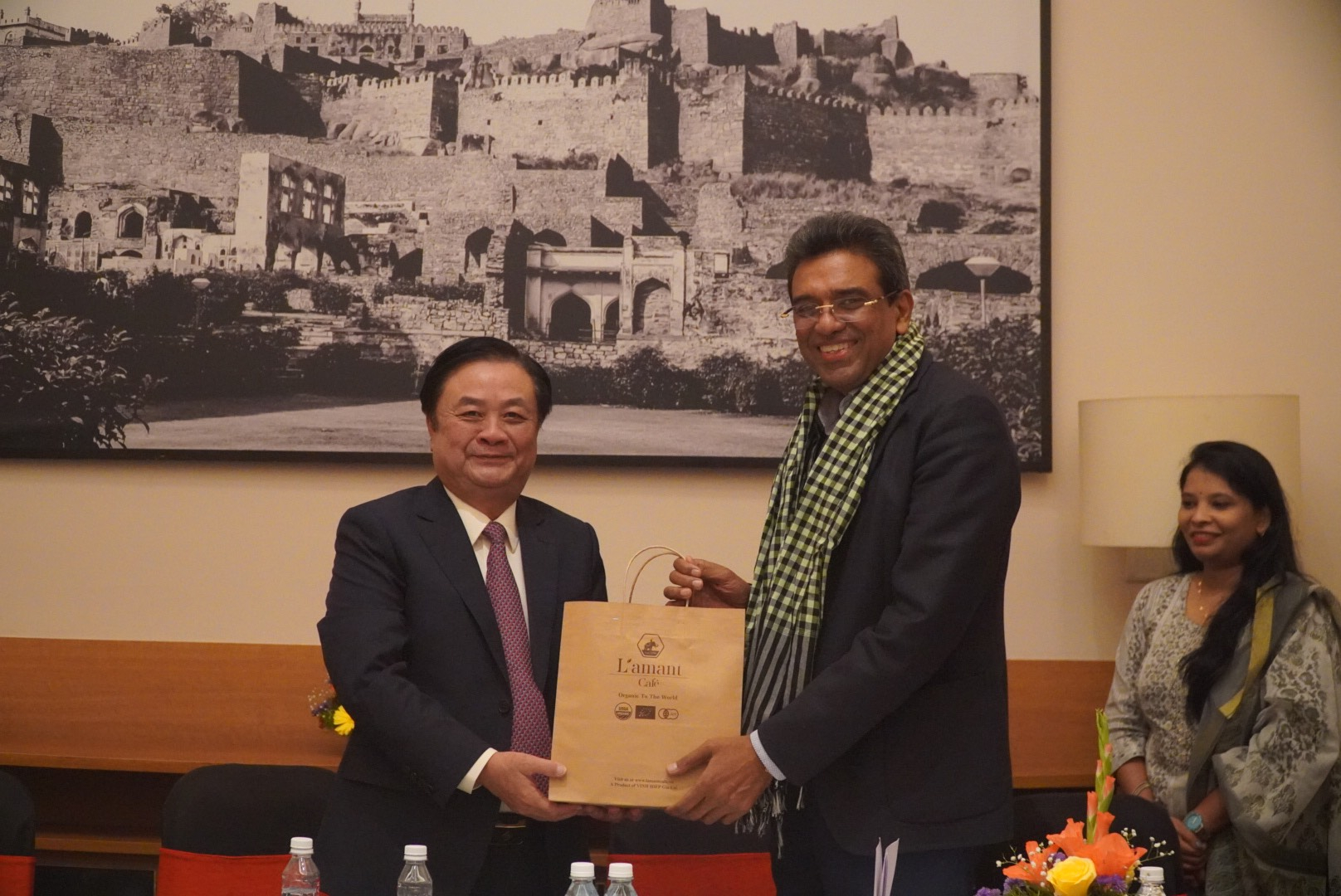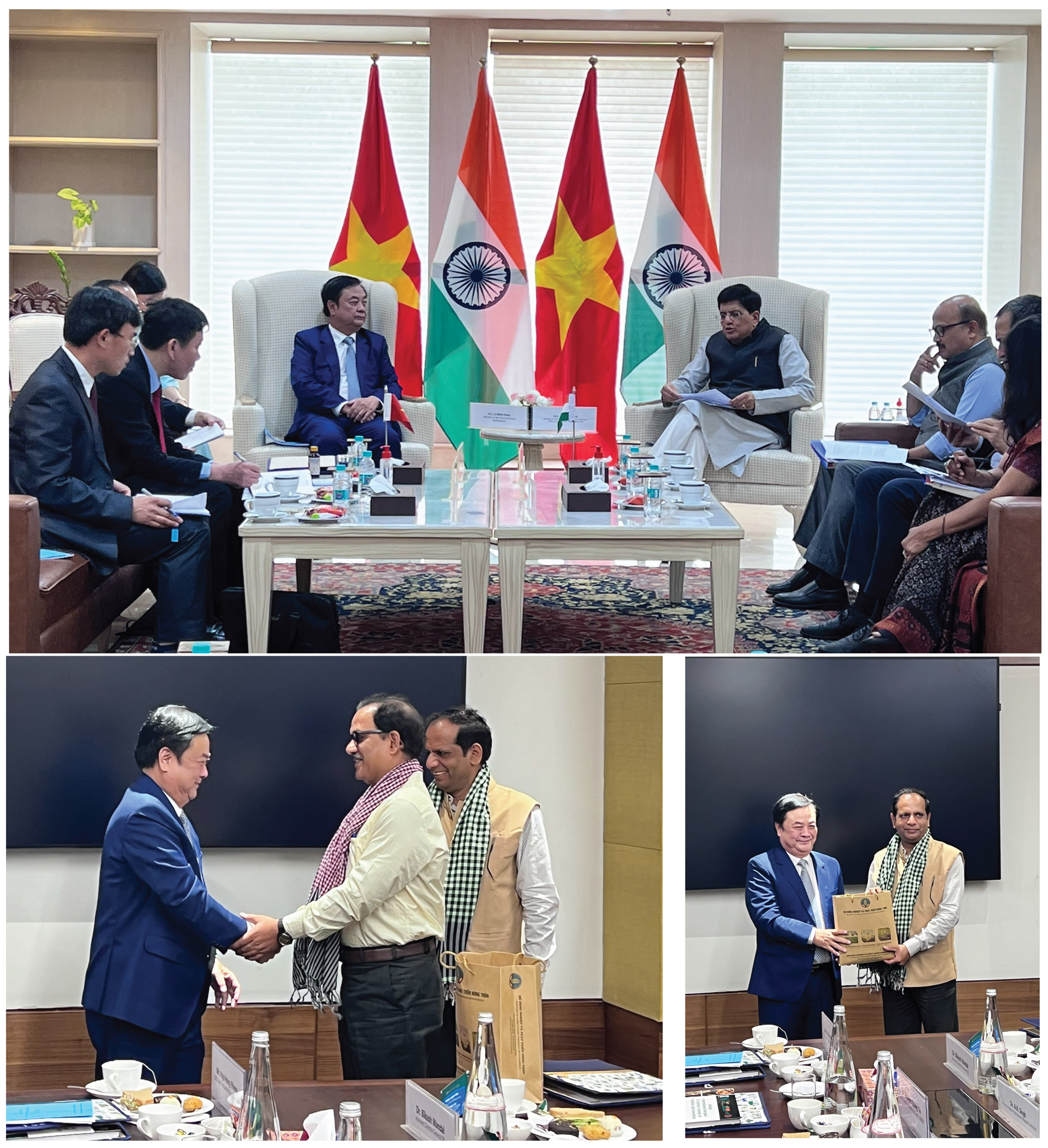The world is so big, and there’s so much to do. “Hundreds of numbers” unknown things, new things. Each trip is an additional opportunity to access things to learn, things to learn, “as many as the sands of the Ganges”.
Attending the International Forum on Agriculture in India is really an opportunity to understand more about what the world is interested in, the initiatives being discussed, proposals, scientific achievements, innovations. Creation is being made, application. Right from the forum topic, it prompted thoughts on issues of global cohesion: “One Earth – One Family – One Future”, “One Earth – One Family – One Future”.
The multilateral forum attracts the participation of many countries, organizations and partners, so the speaking time of each delegate is limited to a few minutes. Therefore, at times it is difficult to visualize what everyone is doing, will do, but it is still possible to imagine quite new, realistic approaches.
The world is extremely large with more than 200 countries and territories. The host country has become the most populous country in the world, covering most of a subcontinent. However, whether the country is the richest or the most disadvantaged, developed or still on the way to development, the most populous or the least populous, all face a series of common challenges, related to: food security, nutritional imbalance and sustainable development in the context of climate change, local instability occurring here and there…
That is why I understand why a forum dedicated to agriculture, in the context that the world has so many things to focus on solving, always attracts attention and active participation. That is to understand, no matter how prosperous, how powerful, how much has entered the era of industrialization and digital economy, food is always a daily concern in every family. family, each country, and the whole planet.
That is to understand, the world is getting “flatter” and more connected, but each country is establishing its own position and looking for its own opportunities, at the same time, always needing each other, learning from each other, to join hands. solve urgent problems and move forward together on the principle of “win-win”: mutual benefits, win-win.
Perhaps the message of Indian Prime Minister Narendra Modi in the opening session said it all: “Agriculture is the heart of human civilization and will continue to be the future of mankind”.
The first realization is that agriculture in all countries is facing roughly the same challenges: shrinking agricultural land, climate change, water crisis, widespread disease input costs increase due to scarcity of raw materials and disruptions, disruption of the logistics chain, output crisis due to global trade driven by protectionist policies, changing consumption trends towards nutrition , health, green…
These challenges directly affect agriculture, especially small-scale farmers. These vulnerable groups of farmers are the key contributors to world food security.
Those groups directly engaged in farming and production need to have access to science, technology, and innovation to improve their resilience to daily uncertainties and to overcome the risks of each crop.
Next, there have been programs at the national level, with the support and advice of international organizations, bringing new discoveries, scientific and technological solutions, through the way of organizing community agricultural extension. field so that farmers can easily learn, understand and implement.
Countries are looking for diverse, appropriate and synchronous solutions to transform farming methods that can positively change lives, support farmers with necessary conditions, knowledge and skills , participate more actively in the value chain. Every product of scientific research and innovation, big or small, is inseparable from the intimate needs of millions of small-scale farmers.
An interesting point is that there have been many initiatives to help rural women and youth access start-up programs in the agricultural sector. Many countries consider it a priority policy to form new farming groups, become a bridge to bring science, technology and digital transformation in agriculture to remote rural areas.
The international approach is to help groups of farmers improve their capacity to adapt to technology, to change the way they grow and raise livestock, to form a technology ecosystem for rural communities, to minimize impacts and risks due to natural disasters, epidemics, high input costs or sudden changes…
It is noted that the welfare of farmers is always concerned, but not only by simple poverty reduction policies. Welfare for farmers revolves around companion solutions, helping farmers master technology, access to scientists, agricultural extension forces, to handle practical situations arising in the field.
It is impressive to see the image of a farmer appearing with a smile full of happiness on the introduction and promotion posters. Even more impressive, when in the space introducing agricultural science and technology achievements, the image of a farmer sitting in the middle of the field, connected by radio channels, smart devices, to receive advice from the promotion agency. local farmers.
And what is the feeling, when the above booths are all united to send the message “Empowering Farmers” – which can be understood as “Creating a position, improving the capacity of farmers”.


Research products assist farmers with simple devices such as test kits that analyze soil quality, to suggest ways to improve soil nutrients. Unmanned devices with integrated sensors can identify pest parameters, analyze data and make accurate fertilizer spraying decisions, avoiding waste.
The research creates a variety of product lines from a key agricultural product, such as: cosmetics, pharmaceuticals from flowers, stems, branches, leaves, roots of a plant. Experiments to change genes to create specialized rice grains, suitable for each type of consumer.
The products of science, technology, innovation are closely meeting the needs and targeting of farmers, in accordance with the strategy of “Empowering Farmers” – “Creating a position, improving the capacity of farmers”.
The visit and exchange with the Agricultural Research Council opened many thoughts about how science and technology should be organized.
Even the content of “Agricultural Research” shows the mission, comprehensiveness and synchronism of this organization. The requirements for the development of the agricultural sector are not only science and technology, technology integration, but also economic factors, rural sociology and farmer welfare policy.
In science and technology, solutions from many disciplines have been integrated: soil nutrition, varieties and hybrid technology, production processes, irrigation solutions, pest control; harvesting and post-harvest technology; organic and food safe; application of data platforms by digital technology; agricultural education, farmer training; manufacturing machinery and equipment to help farmers improve productivity, produce and process agricultural products more efficiently.
The Council is organized inter-connected with many agricultural scientific organizations, orienting the research that must serve the agricultural development strategy of the country. The connection between scientific organizations, integrated thinking between the majors, helps to synchronize research activities in the industry chain and create efficiency and value for society.
The structure of the Council consists of research institutes closely linked with universities and agricultural science centers at district level, creating a synchronous agricultural research and development ecosystem, with the main objective of promoting agricultural research and development. promoting agricultural innovation, serving small-scale farmers.
A close linkage structure between scientific organizations is necessary because no one organization has enough resources to be able to create a synchronous solution including elements: specialized techniques, technology. , machinery and equipment, economics and marketization…
Thinking deeper, that is the spirit of cooperation of scientific research organizations. Mechanism of connection between institutes, universities and local science centers so that research products are highly applicable, diffuse and create real value.
That shows the spirit of willingness to share the value of scientific research to create value for life. Is it true that collaborative research thinking and shared value thinking make up the scientific spirit?


A former leader of the Ministry of Agriculture and Rural Development once thought that if our research is not oriented, it will be far from the Strategy for Sustainable Agriculture and Rural Development. The core values of the Strategy are: reducing costs, increasing quality, diversifying processed products; shift from agricultural production thinking to agricultural economic thinking, from single-value growth to multi-value integration. Strategy towards green, ecological, circular, renewable, emission reduction agriculture…
Approaches from the Strategy must be justified in each scientific research activity and technological solution. At the same time, scientific research topics and useful solutions need to be promoted in a large space and spread values to businesses and farmers.
The challenges and risks to agriculture are similar across countries, although they may vary in level. Industrialization and urbanization create conflicts in the development process. Rural people concentrated on urban areas, leaving only the weak and vulnerable in the countryside.
The point is to find an adaptive solution, instead of whining and blaming. When it comes to drought and heat, with the view that water storage for irrigation is not the only solution, India has researched and created thousands of varieties that can adapt to water shortage and heat-resistant conditions. As input costs increase, research on technological solutions to save the amount of seeds and fertilizers is required. Pests, then research to change genes, form many varieties resistant to multiple diseases, take advantage of local knowledge, to limit the harmful effects of insects.
The complex, unpredictable context shows that nothing is constant. Flexible change, proactive adaptation is always the driving force for each organization and country to move forward. What lasts so long is often seen as perfect, but it also requires a sense of “inertia,” of being passive in the face of the rapid, relentless changes taking place around the world. For every difficulty and challenge, there is a solution. Successful people look for solutions, losers find excuses.
The meeting with a leading seed company brought many surprises. At the beginning of the presentation, the presenter did not immediately introduce the potential of the business, but introduced an overview of the country’s Agricultural Strategy, including research achievements on the seed industry.
Next, brief information about the company’s research and technology capabilities and achievements is presented. At the same time, the presentation also analyzes the application of integrated technology, digital technology gradually becoming popular, to create optimal technology products for farmers to use. The formation of business clubs creates the best conditions for businesses to reach out, open up, and gradually dominate the world market.


Leaving the Global Agriculture Forum, goodbye to the diamond-shaped country, still carrying emotions with the image of farmers solemnly introduced on billboards along the streets. It is true that “farmer is the subject”, is the goal towards policy development, scientific and technological activities associated with agriculture. In particular, the message throughout the statements is directed towards small-scale agriculture, vulnerable farmers, easily left behind.
Remember the sentence again: “I was born in the countryside and my parents are farmers”.
According to Nongghiep.vn
